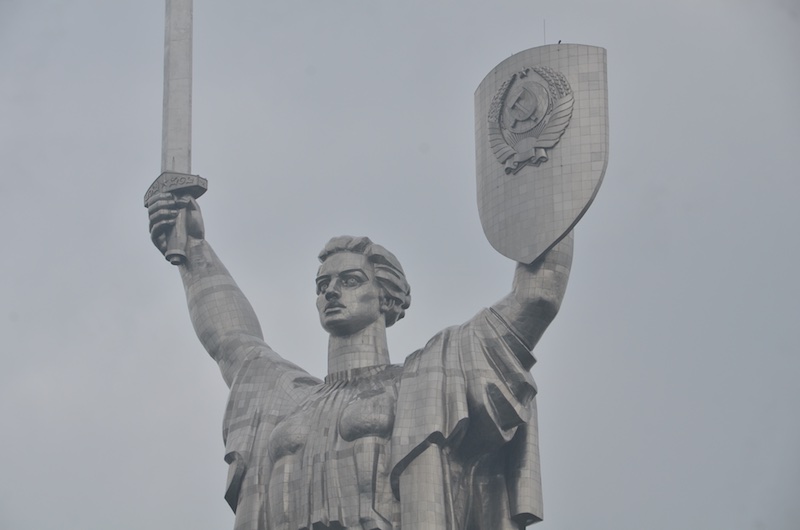
There is absolutely nothing like Kiev in the Autumn. I’m sure the native residents don’t get all whimsical and gushy about it’s weathered brutalism and ageing infrastructure, but to an outsider the city feels like a different universe. Every manhole, every building, every passing metro train is a meekly disguised outer tendril of some outrageous post-soviet adventure, only visible to those who want to give it a yank and roll the dice for the next trip down the rabbit hole. By October, the cool air is primed with swarms of dead leaves, charging down the cracked pavements, searching for a withered face of Khrushchev’s concrete to collect against and rot against a chorus of barks from the thousands of stray dogs that patrol the evening streets. The Dniper, the path to the Black Sea, that vast freezing torrent that cuts the city in half with the sheer slopes of Arsanala rising up from its graf caked banks, concealing its labyrinth of drains, trains, bunkers and tunnels. You can’t help but fall completely in love with it.
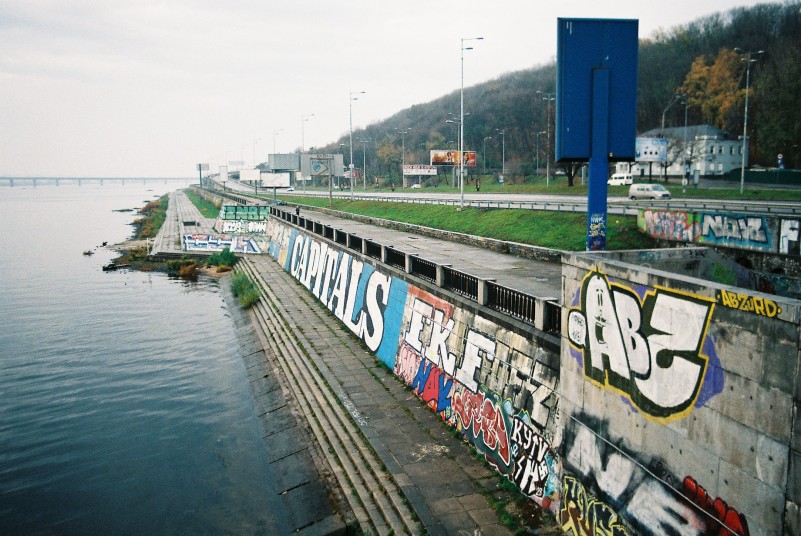
..The robotic tannoy yelled “Хрещатик!” and I dropped in with the shoal of grumpy commuters, sweeping me out the metro carriage, across the platform and up the absurdly long escalators.
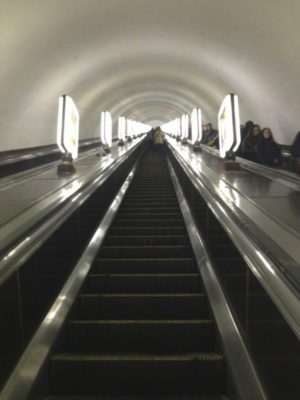
My plan had been to meet Vlad and Sol about 2 hours earlier, (but flights/delays etc) so the poor lads had just been kicking about sinking pivos waiting for me to drop by so we could get down to business and hit some tunnels.
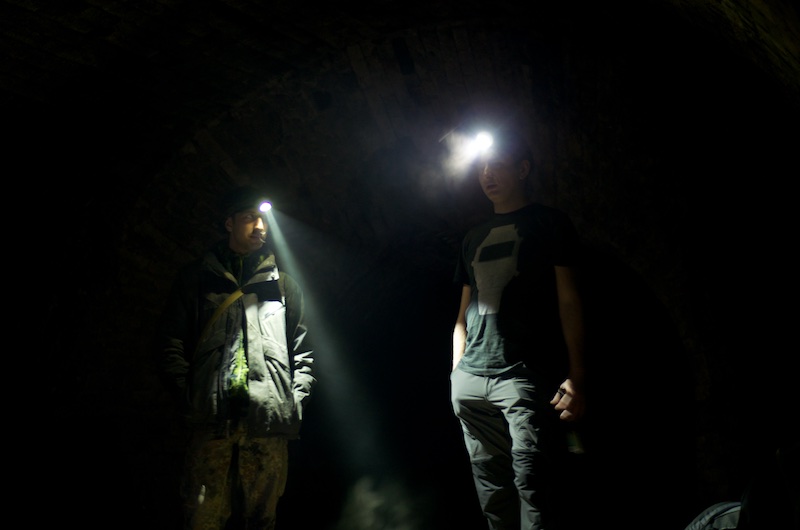
Evening, lads
It’s difficult to properly recount these things without the taint of hindsight, and at the time I put it down to the Ukrainian demeanour and not something I should try too hard to understand, but it seemed talk of the governments endemic corruption and its kowtowing to Moscow came up in conversations way more that usual. We were at the tail of 2013, two or three months before the so-called ‘second revolution’, and as we slipped down under a concrete shaft-cap in one of the hundreds of abandoned construction projects on the south west of the city feeling around in the dark for handholds on the rusted ladders down a 50m shaft, Vlad looked up at me:
“This…” – he said, pointing down the into the darkness to the glinting lights below us , “3 years ago. Should have been finish”
I asked him what happened, as we carried on further down the ladders.
“Storm water collector. They don’t build here anymore. Government stole all the money.”
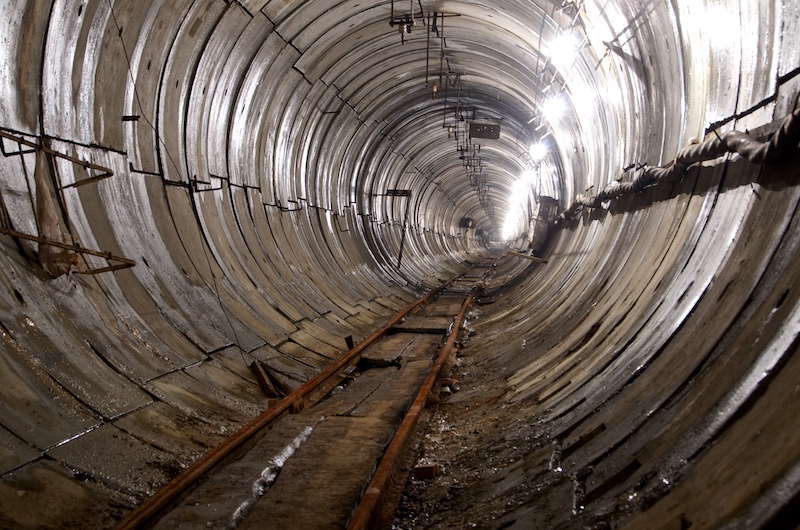
As our boots touched down in a festering puddle at the bottom, I looked down an enormous concrete tunnel which must have been about ready to be filled with water once-upon-a-time, but had been neglected for so long and had so much water ingress the plates had started to slide out of place in a perfect embodiment of the scandalous corruption that, in part, lead to the 2013 riots and everything that followed.
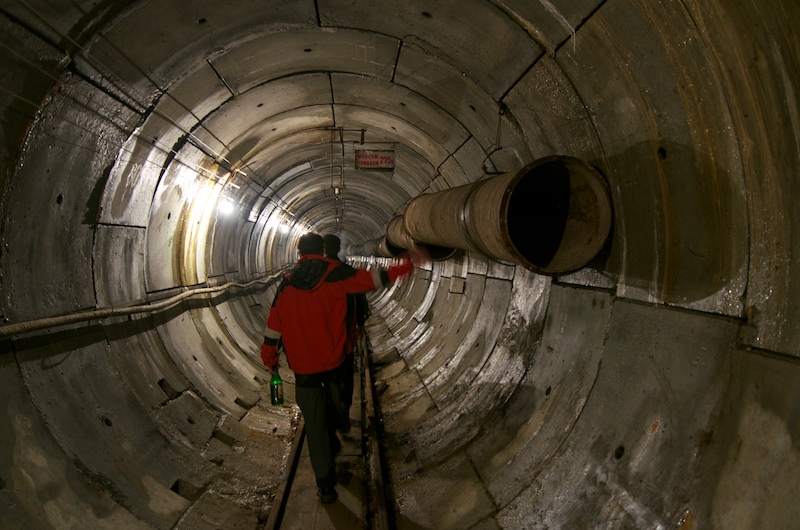
Anyway, onwards…
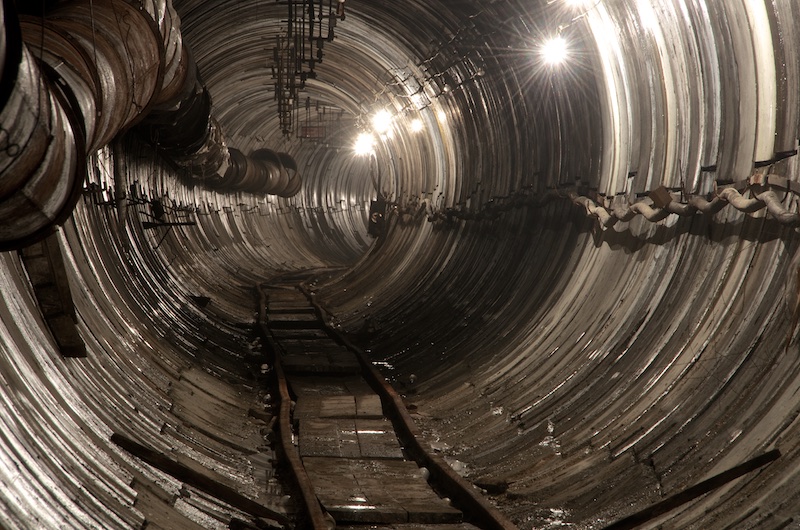
The one thing I love about this lot is all the songs. They’ve got one for pretty much everything and as we cracked another couple of beers and started hiking along the tunnel to the ‘special surprise’ at the end, one of the lads started a rendition of devyat’ i vodka, or ‘nine and vodka’, a drinking song about getting absolutely trashed and going exploring until you get too fucked up and fall over.
It must have been a good 20 mins, past abandoned works trains and abandoned tools, to the base of another shaft and the most dilapidated rusted specimen of a TBM I’d seen in my life.
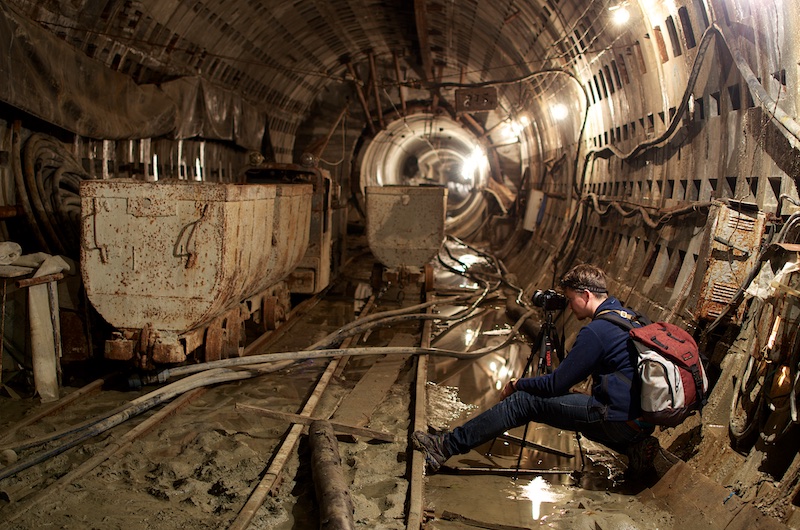
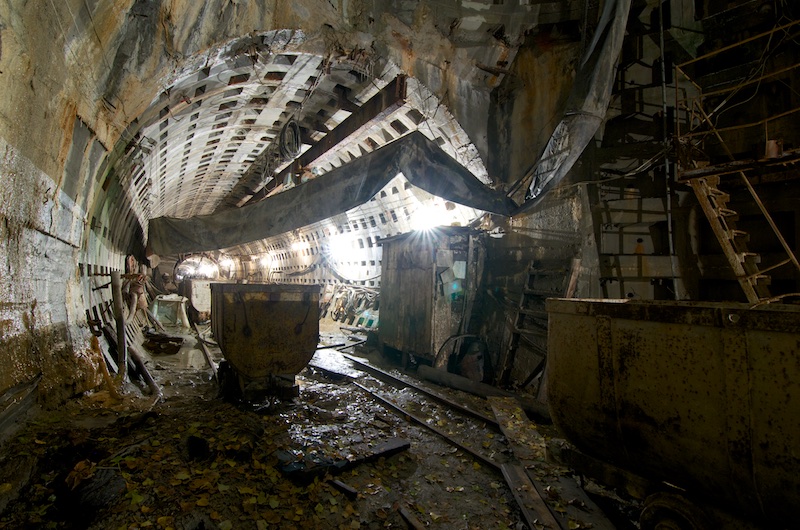
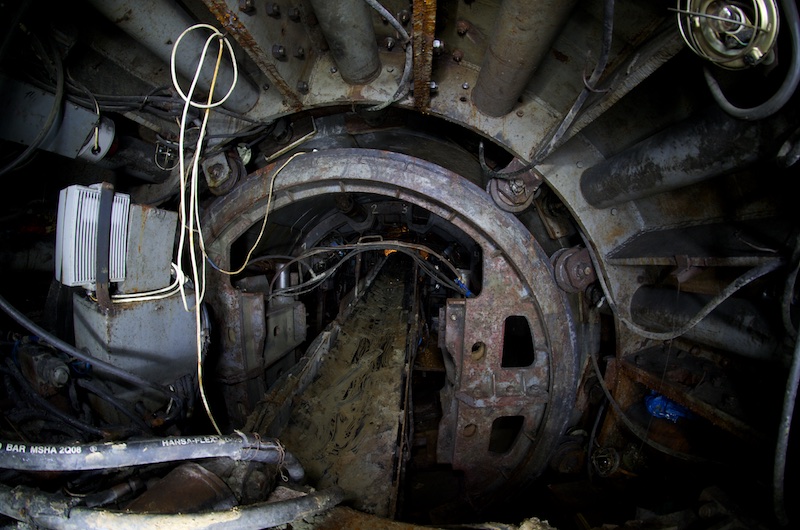
While I still have hope for them getting their act together and finishing those tunnels, this thing is defo going in the bin.
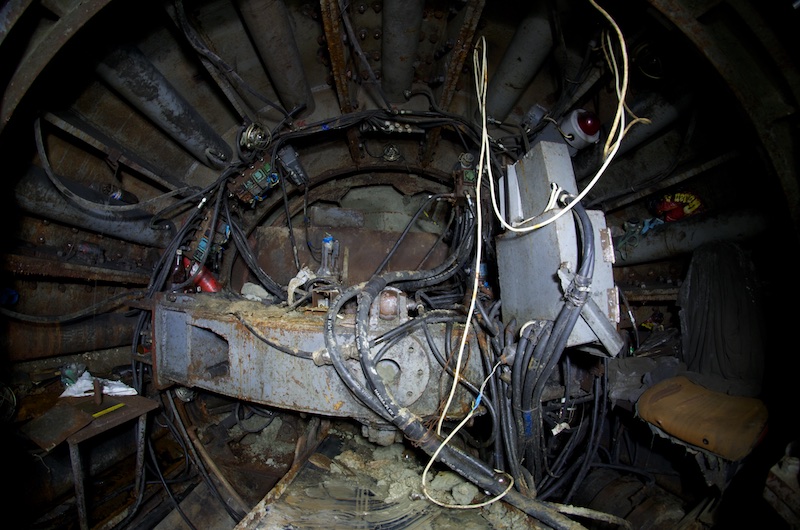
We sat down for a while in the rear carriage of the tunnel borer and shared stories, what we’d been up to in the year or so since I’d been in Ukraine. Me prying on the juicy details on the Metro-2 and the fate of various now-deceased or arrested Uke and Russian explorers, and them looking starry eyed on tales of the Tube and Post Office Railway and other such subterranean Londoney playgrounds. The London Tube, for some of them was a serious object of desire in the same way the metro systems of the Soviet era are for us western europeans, and as luck would have it, they would be the subject of the next days outing in the form of a good old fashioned near-death practical history lesson.
метро.

As the Cold War progressed past the advent of the hydrogen bomb, the powers on each side of the meta-conflict had a pretty fundamental decision to make:
Was the probability of nuclear holocaust great enough, that provisions needed to be made to ensure the well being of the millions of citizens who would otherwise be killed in the crossfire, or would it be a safer economic bet to just build a couple of mega-dens for the top brass and leave the civvies to duck and cover under their kitchen tables..?
While Britain knocked up their glorified cave squat in a Wiltshire quarry and finished the job with a smattering of ROC posts and ROTOR bunkers, a surprising number of nations pumped untold millions into the construction of civilian nuclear shelters. Of course, it wasn’t labeled ‘wasted’ money at the time, but the costs of preparing to wage and defend from nuclear war were absolutely colossal, and many of the partaking nations were looking to save money wherever possible.
It had probably been noticed by NATO spies at the time that the new Soviet metro systems had been built ridiculously deep, over 100m in some places, and if you catch a train out of any central subway station in most of the post soviet cities, you’ll see why. The Russians, who were masters of cost cutting and pragmatic efficiency back in their day had ingeniously decided to save a few roubles by combining commuter rail with the end-of-the-world game plan.
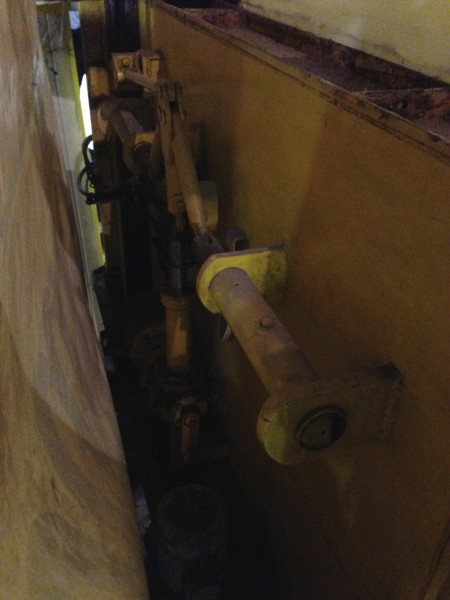
Blast door hidden behind an advert in a metro station
Don’t get me wrong, we’re not talking about Vault-Tec Cheyenne Mountain levels of comfort here, but with the blast doors, air filters and stockpiled food supplies thousands of people could have lived down here in relative comfort to ride out the inbound radioactive shit storm swirling above their heads. It was a damn sight more than we had in the UK where the government figured that the world after nuclear war would have been so horrendous, no one would actually want to live to see the aftermath anyway.
Spending a nuclear winter stuck in a metro system sounded absolutely horrific, but an afternoon at it seemed like a good way to work up an appetite for dinner. Me and local troublemaker Dima (later of InsidersProject fame) spent the afternoon lying to curtain twitching pensioners and builders about our jobs as ‘internet repair men’ freeing us up to monkey around on their rooftops waiting for a good time to hit the system.
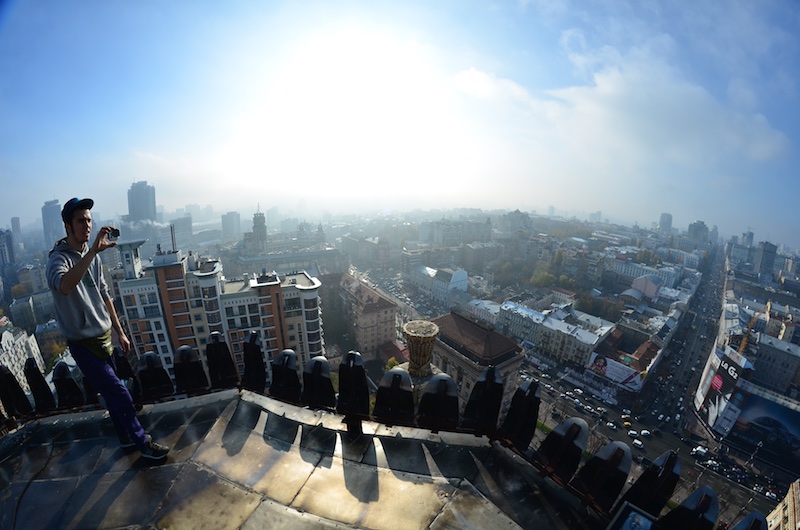
A cracking climb up the star of one of Stalins grand ‘Soviet Reminder’ buildings (there were going to be a few more but Khrushchev wouldn’t have em – too fancy) proved an excellent start. The thing is utterly knackered, and just about ready to kick the bucket of some unlucky Ukrainian teenager trying to lean out from the rusted ladders for the insta-perfect selfie.
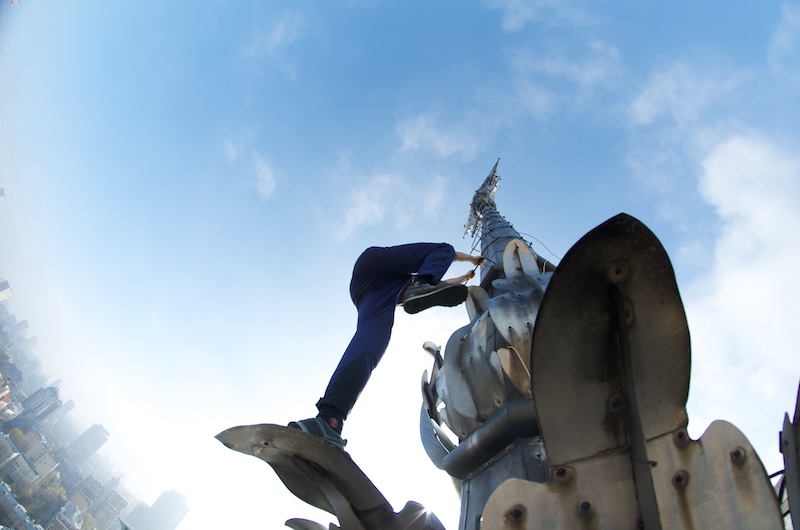
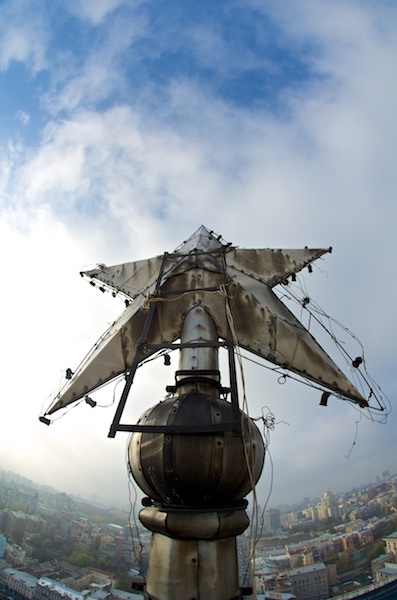
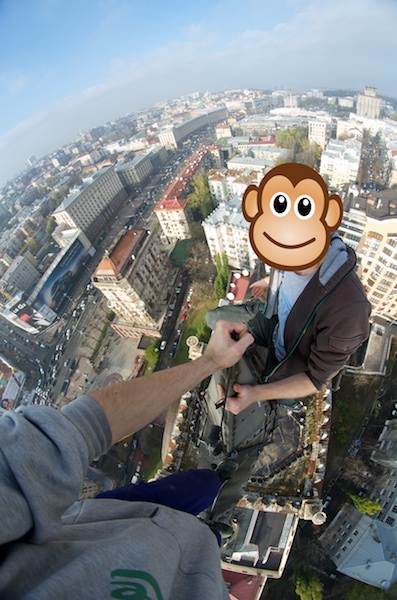
And another similar spire overlooking Maidan. If you’re into this stuff, there are some cracking rooftop journeys you can do in Kiev, up and down fire escapes, through attics, and over various sculptures and ornaments. You could spend all day at it.
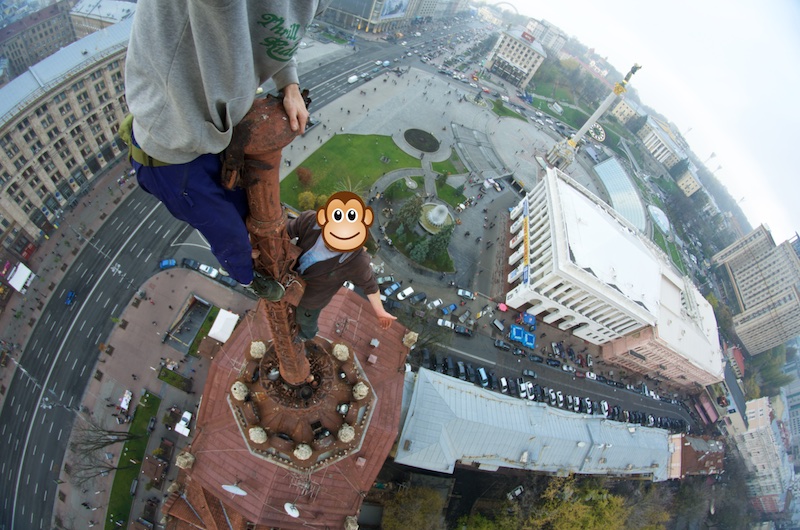
To keep things interesting, Dima thought it’d be nice to go at rush hour when the trains are about 20-30 seconds apart. I suppose most people would consider the idea of running into an alarmed, zero clearance metro system at peak hour a bit of a silly thing to do, and I did, if I’m being completely honest (i’d have probably died had I attempted this from cold without a helping hand), but with the station guards back turned and a ready, steady GO we were bailing of the end of the platform and into a trackside service hatch just as the next train shot into the station. From here, a quick crawl underneath the platform cavity through sixty years worth of brake dust, oil and countless trillions of Ukrainian hairs and skin cells saw us perched under a rusty grill at the other end of the station, from which Dima pointed out an innocent looking white box attached to the wall of the tunnel.
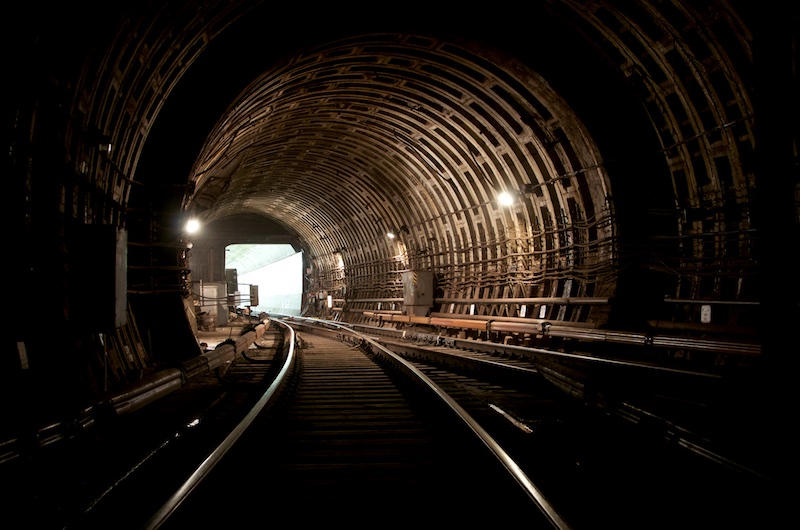
‘The signalization’, he said. ‘We must climb over, ok?’
Back in the England we think we’ve got it hard, but the UK scene is chill enough at least for the authorities not to be specifically looking for us (well, maybe not for long). The Kiev diggers have been making a nuisance of themselves for almost two decades and as such, a number of measures have been put in place to stop people charging off the end of the platforms. If you trigger one, the trains will stop, and you’ll be running down the tracks away from a good thrashing by the unhinged, violence loving metro cops.
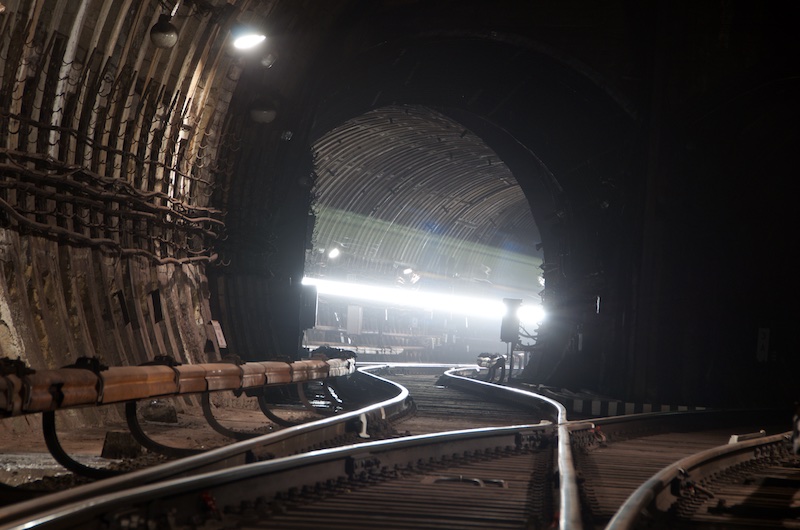
The draft from the next train started filling the tunnel, and as soon as it had shot past us, we darted up out of our hatch and climbed on to the cables on the walls of the tunnel, spidering over the alarm box and into the raccord connecting the green and red lines.
The metro systems of the former Soviet Union have such an awesome distinctive vibe to them. Oversized brutal utilitarian spaces, they make the London tube look like a 60s Vespa next to a T-10 tank.
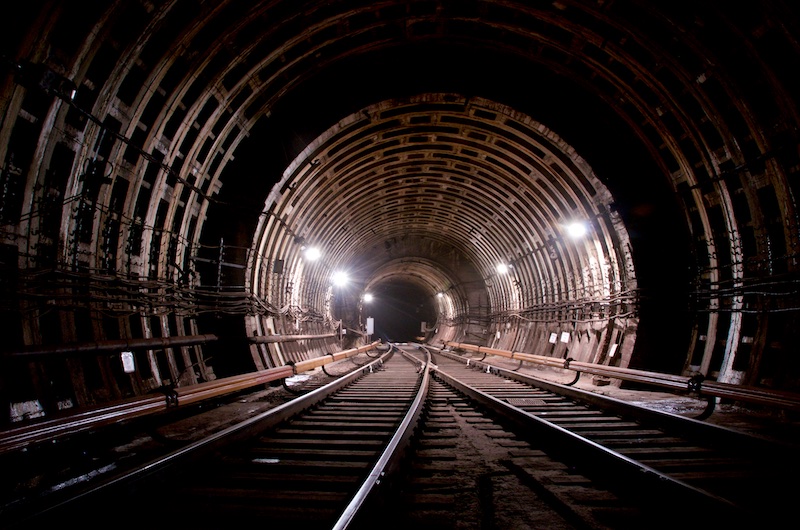
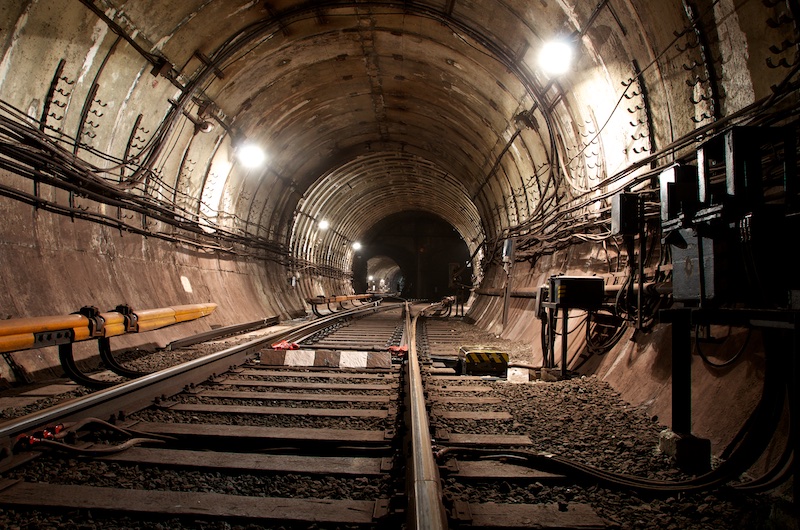
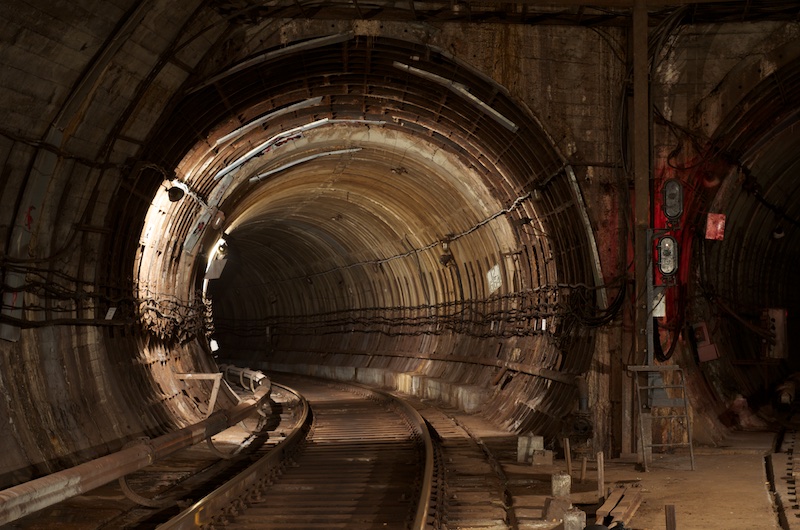
Off this raccord towards the three way split, we had a look at a few side vents containing the seized up remains of a few giant hermetic doors, particulate filters and fans.
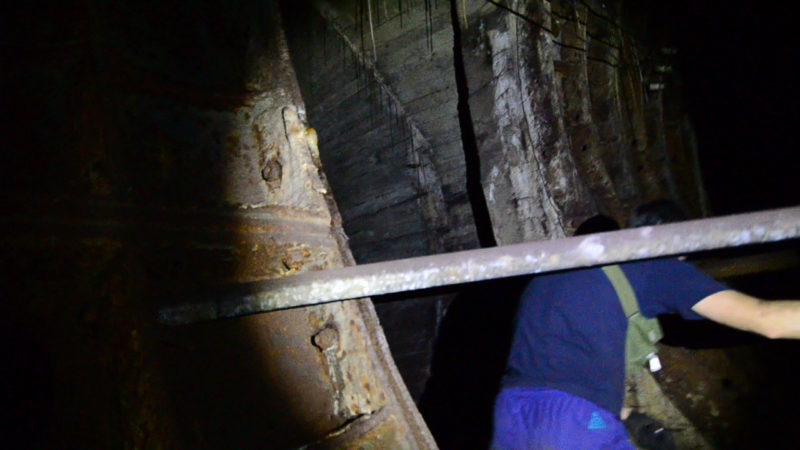
Every so often we came to a blast door on the rails for sealing the metro system and switching up to ‘Bunker mode’. Apparently, these ones are all knackered, but the ones in Moscow still work, ready for action.
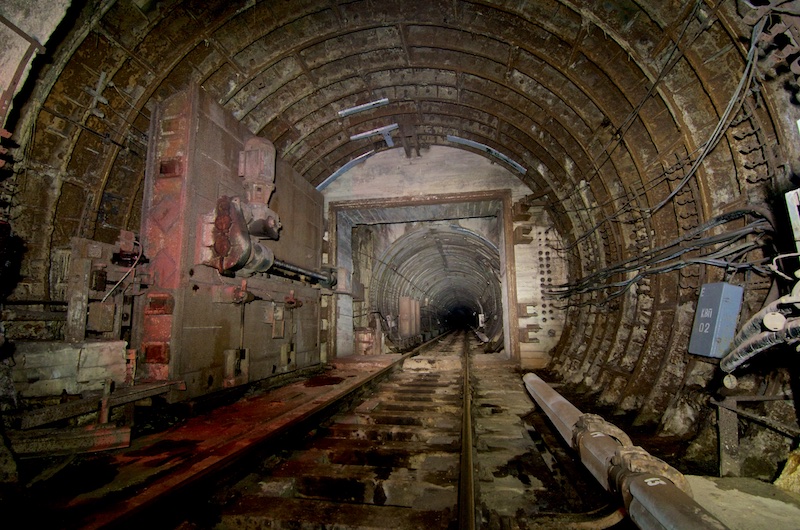
The features kept on coming, and I think this was one of my particular faves. Classic Uke weirdness, one of the Onion Junction tunnels, merging the raccords connecting the three main lines. I was pretty made up to see this.
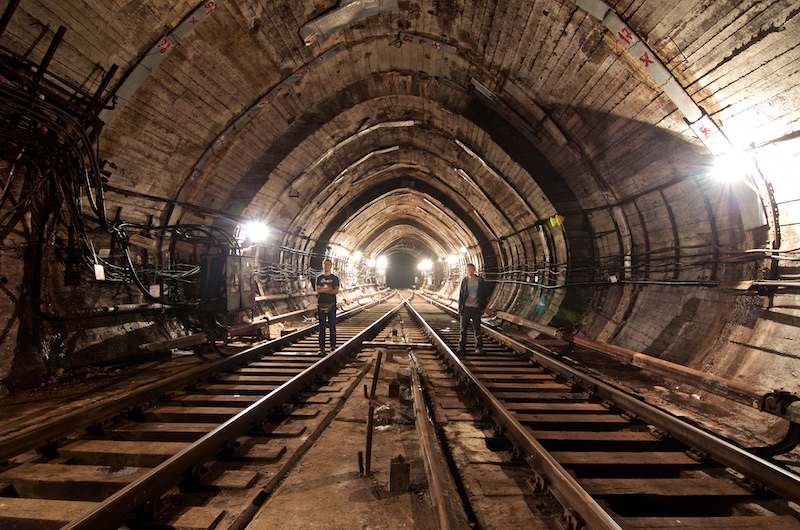
‘Take a lot of photos, don’t rush. It’s possible you may not come back to this place again.’
I didn’t take enough photos, and the man was right. Well, I’ve not hit the tracks of the Kiev met in a good 3 years, and from what I’ve heard, in exactly the same way it works everywhere in the world most of the old heads have stepped off having done all they want to do and left it to the younguns to get nabbed and beaten by the police.
“Come on, we go now. We can have a look at awesome booonker”
(In Russian, the ‘y’ character, an ‘ooo’ sound, is often directly swapped for the English ‘u’, which is why you’ll hear Russian speakers saying hooodie and booonker, which I absolutely love..)
We left the tunnels via a classic sensor-beating escape route, chasing a train out a service alcove to the station and climbing up the back on the platform, then hopping into the carriage before the platform staff knew wtf had happened.
We rode the train back up to Dnipro on the banks of the Dniper to meat Ellis and her mate, and before I knew what was going on, we were clinging to the flat-bed of a stolen mine cart hurtling towards the centre of town via a 90m deep emergency water supply tunnel. Beats walking I guess.
We emerged and went over to another one of the 100s of fallout shelters dotted around the city, situated under an old factory. As mentioned previously, the Soviet governments’ intention was to be able to safely house as many of its population as possible in the event of war, and even with the nuclear hardened metro system this still meant a hell of a lot of regular concrete bunkers were built, mostly under large apartments and factories. It’s pretty incredible that 20 years after the fall of the Iron Curtain, these places are still stocked to the rafters with all the original documents and equipment, although ones in this good nick are getting few and far between. The rapidly snowballing popularity of ‘digging’ has basically rendered all but the most secretly guarded bunkers completely stripped, as notwithstanding the fact that the hazmat suit leg sections (which are found by the crate load) make for a cracking pair of waders, the gasmasks, chemical suits, old anti-radiation medicine and other old bits and bobs make plenty of crafty bunker enthusiasts a lot of Hyrvnas shipping this stuff off to the collectors of America and Western Europe. If you find one of these bunkers now, I’m told, you keep your bloody trap shut!
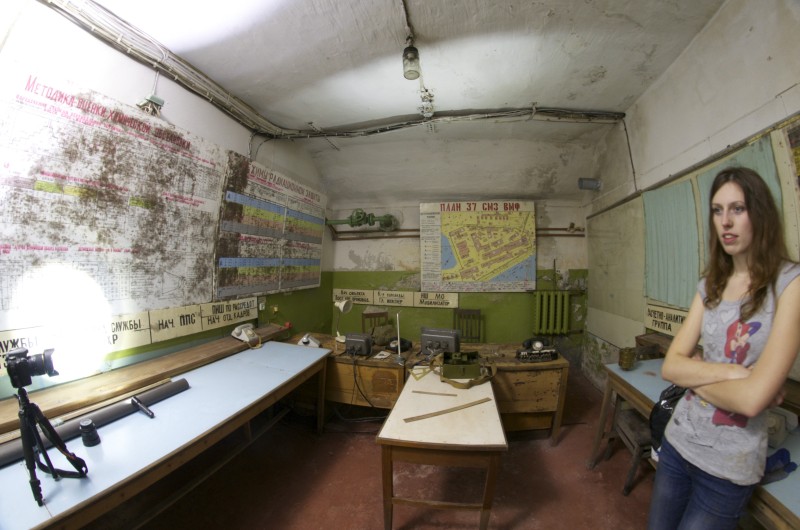
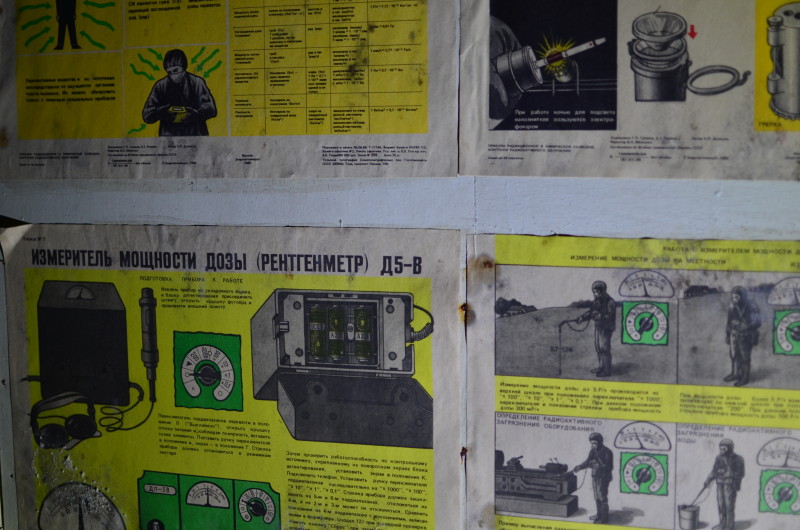
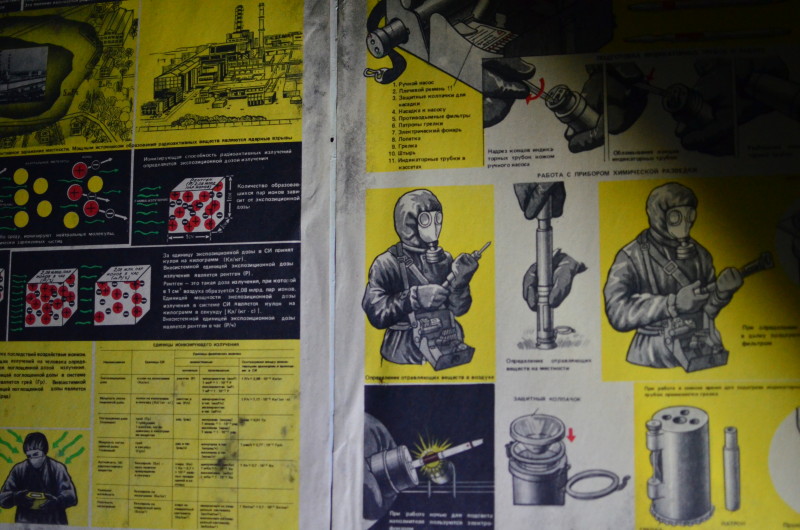
In the following days, we whiled away our time drinking with friends, letting off fireworks in more bunkers, strolling out under the stars into and over more of Kievs halted construction projects and doing a bit of light rooftopping, just hanging out and passing the time in some cool places with some really sound people. I’ve always seen this scene, by which I mean the loose knit group of ‘international urban explorers’ as basically a weird international travel bureau, with the price of admission being having cool stories to share, and being willing to create new ones.

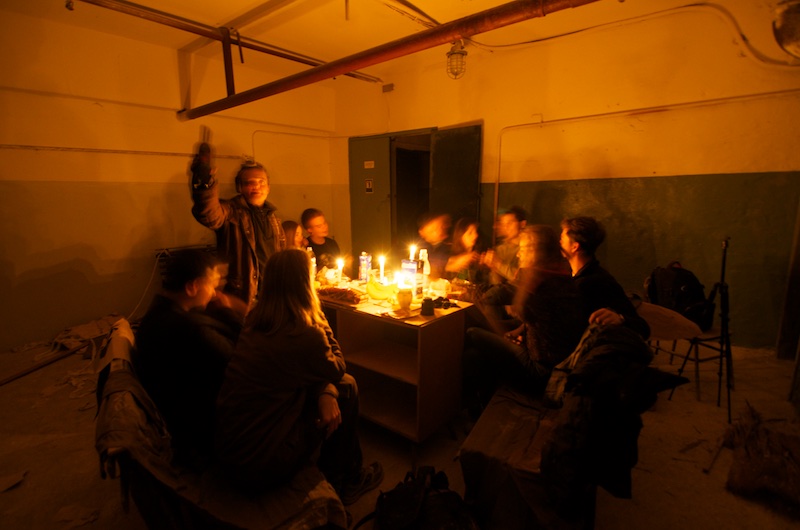
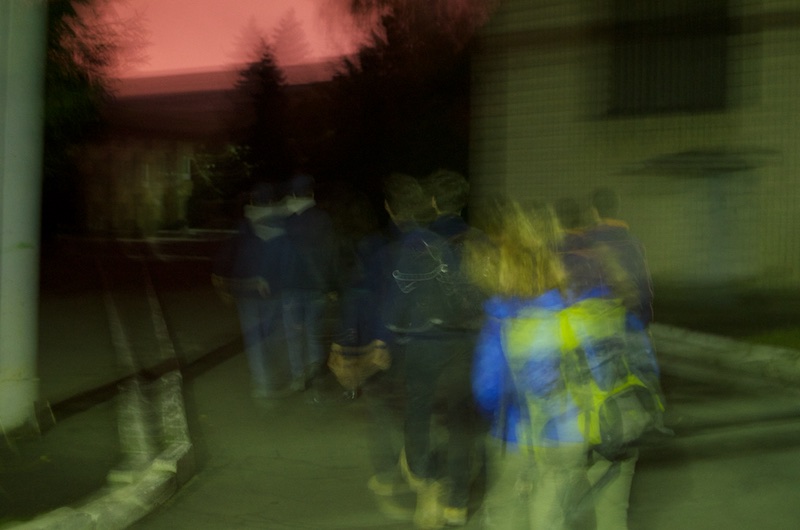
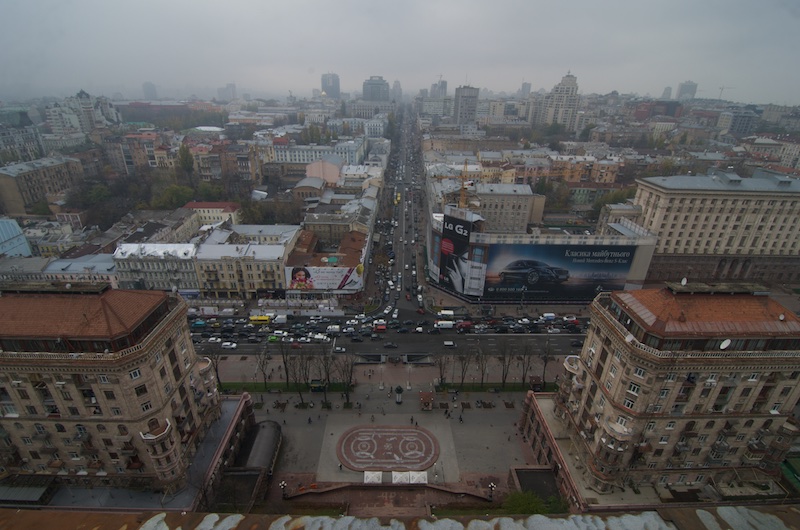
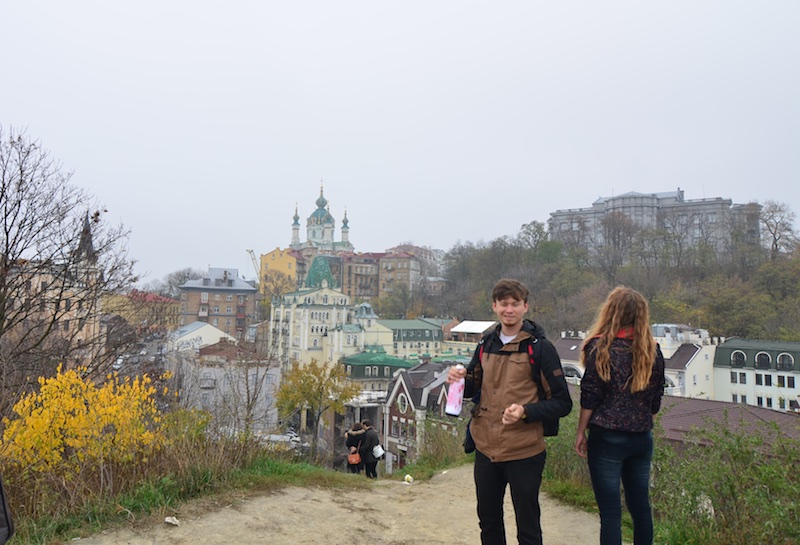
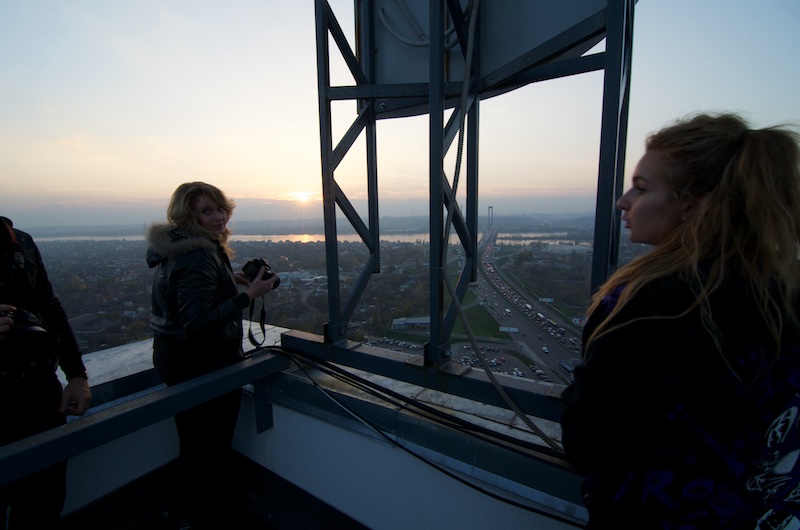
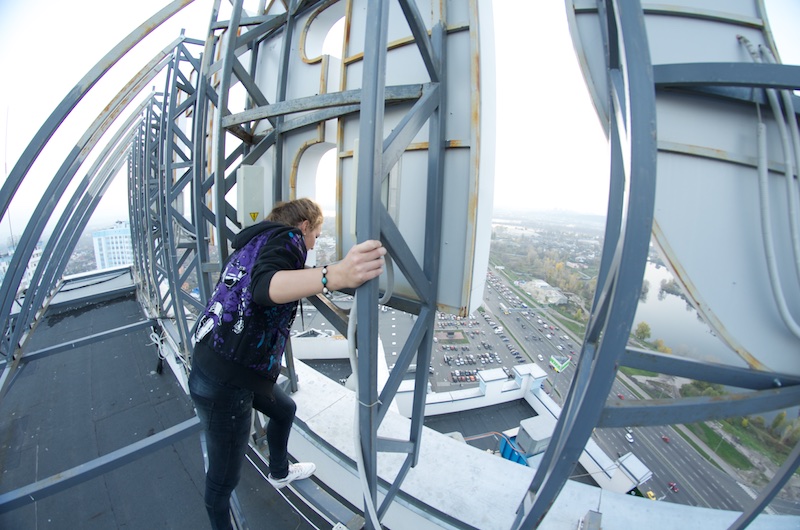
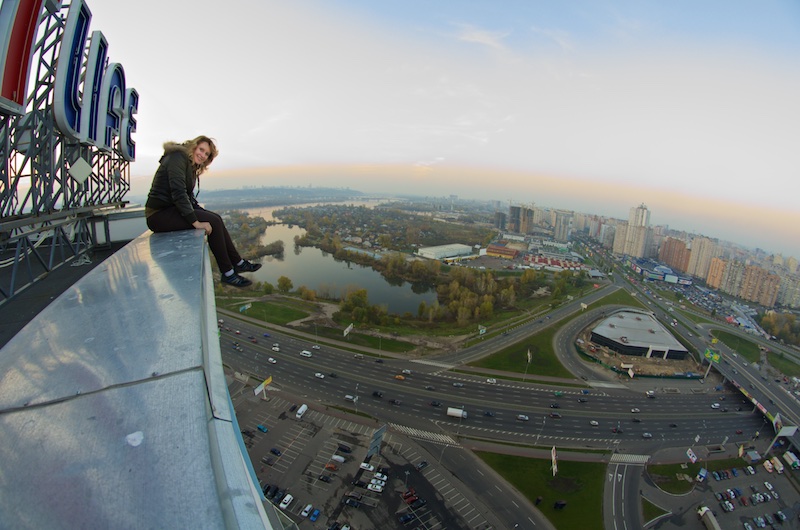
Until next time Kiev. I had an absolute blast.
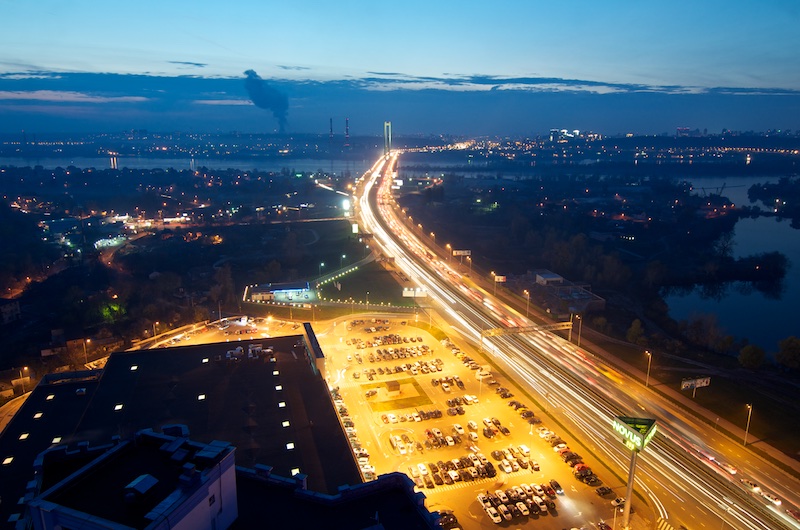
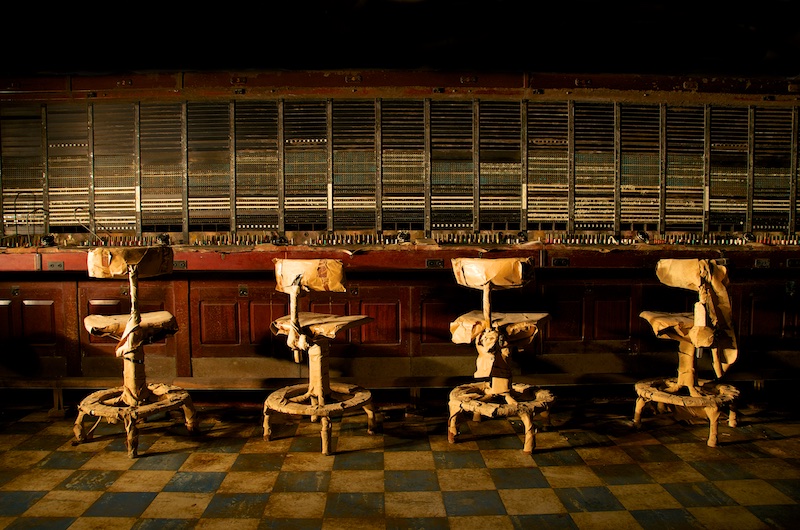
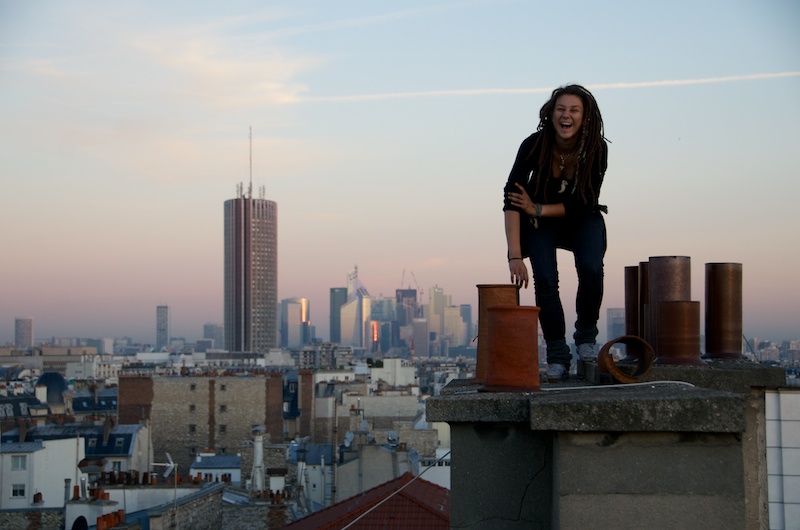

Leave a Reply